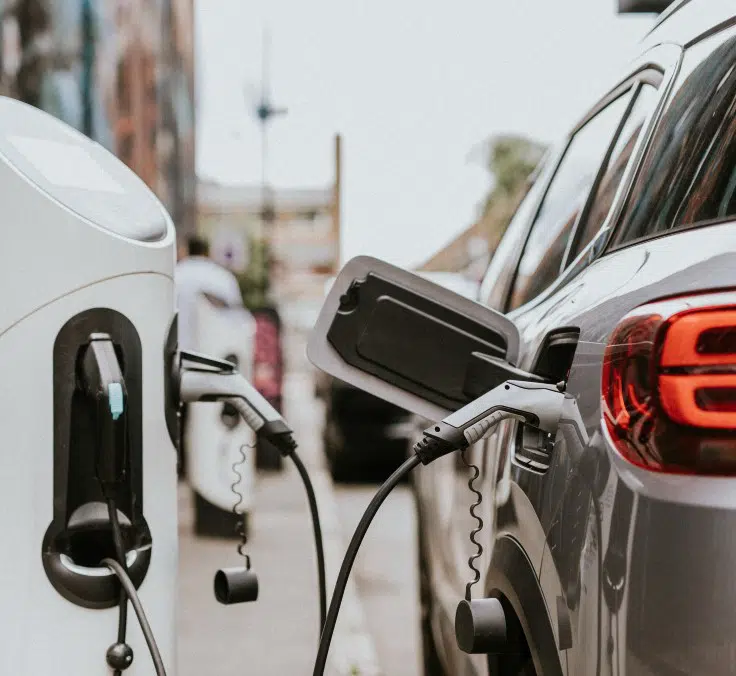CORPORATE| 03.01.024
New Euro 7 regulation: what will our next cars look like?
European authorities are taking the final steps toward a new regulation on vehicle emissions. Because it will come in the midst of the transition to electric mobility, its implementation may influence how manufacturers and consumers prepare for an uncertain future.
Will vehicles become more expensive? Will they consume less? Our experts at CESVIMAP, MAPFRE’s mobility laboratory, will take you through the key aspects of the Euro 7 regulation.
The latest proposal for the Euro 7 regulation is an agreement between the European Commission and the European Parliament that comes after years of debate. While it still awaits final approval, this draft proposal has sought to strike a balance between environmental and climate objectives and the reality of the automotive sector. For instance, it was initially planned to come into force in July 2025 for light vehicles (passenger cars and vans) and 2027 for heavy vehicles (trucks and buses), but will instead come into force in 2027 and 2029, respectively.
This balance between ambition and pragmatism is largely due to the cost of developing and implementing new technologies that enable vehicles to be more efficient and less polluting.
- On the one hand, such a cost would end up impacting the final price, and in a sector where prices have risen significantly in recent years, more expensive vehicles would mean that fewer Europeans would be able to afford them.
- Also, at a time when substantial resources are being allocated to the EV transition, there is a need to evaluate the demand for developing new combustion engines. According to the European Union roadmap, these engines will no longer be marketed by 2035, and such efforts could divert attention from electric vehicle research.
With these factors in focus, Europe is heading toward a new anti-pollution regulation that will decide the fate of vehicles on the continent in the near future. These are among the aspects analyzed by CESVIMAP’s CASE Mobility technicians Juan Rodríguez and Juan Carlos Hernández that will have a significant impact on citizens.
Will prices go up?
A rise in prices is a more than likely scenario, explain Juan Rodríguez and Juan Carlos Hernández, although the effect will be negligible as the industry has already undertaken significant developmental work in recent years. “The Euro 6d regulation we currently adhere to is very restrictive, so manufacturers have already invested large amounts of money to comply with it,” explains CESVIMAP.
The proposed Euro 7 regulation itself foresees that the production cost for the industry will increase between €357 and €929 per diesel vehicle and between €80 and €181 per gasoline vehicle, in the case of cars and vans. For trucks and buses, the increase will be even higher—between €3,717 and €4,326. “Taking this into account, it is highly likely that this cost increase will eventually be passed on to the end buyer,” CESVIMAP experts say.
How will it affect the transition and coexistence between combustion and electric vehicles?
The European Union has already set a date for the end of the sale of gasoline, diesel, and even hybrid vehicles: 2035. In pursuit of electrification in the not-so-distant future, it is foreseeable that legislation will continue to become increasingly restrictive towards combustion engine vehicles. This trend “might lead manufacturers to cease investing in the development of traditional internal combustion engines,” CESVIMAP advises. This would lead to a reduced supply of gasoline and diesel cars in the remaining decade until their planned prohibition.
However, European authorities themselves have left the door open for combustion engines by acknowledging that beyond 2035, not only electric cars but also those utilizing synthetic fuels emitting no polluting emissions will be accepted. “With the introduction of synthetic fuels, traditional engines have been given a lifeline, indicating that they still have a considerable journey ahead,” CESVIMAP believes.
Will new vehicles consume less?
“Although Euro 7 only mentions emissions, it is clear that it will have repercussions on consumption: if you want to emit less, you have to consume less,” say CESVIMAP technicians. Therefore, the rise of electrification will continue, through pure electric vehicles as well as hybridization (including micro hybrids), with electric engines compensating for the power lost from heat engines.
The pursuit of new solutions is related to the current challenge of achieving a significant reduction in emissions—and fuel consumption—from diesel or gasoline vehicles. Previous regulations have gradually paired down these aspects, and cars are already quite efficient within the constraints of this technology.
Electric vehicles are also affected: battery life
The Euro 7 regulation sets a minimum durability for the batteries of electric vehicles, based on their category.
For Passenger Cars and Vans:
- 80% of their capacity up to 5 years or 100,000 km.
- 72% of their capacity up to 8 years or 160,000 km.
For Trucks and Buses:
- 75% of their capacity up to 5 years or 100,000 km.
- 67% of their capacity up to 8 years or 160,000 km.
Manufacturers are already offering guarantees close to what Euro 7 will require, although passenger cars are most affected by its requirements, as they typically guarantee 70% battery capacity for 8 years or 160,000 km (instead of the 72% now required). “However, given the continuous advances in the development of high-voltage batteries, we do not believe it will be a challenge to meet these requirements,” predicts CESVIMAP’s CASE Mobility department.
Engines aren’t the only polluters: new targets for brakes and tires
Although the most significant emissions from vehicles are the exhaust gases produced by combustion in the engine, brakes and tires also pollute by emitting particles. Specifically, tires are believed to be the largest source of microplastics in the environment.
As electrification progresses, these types of pollution will represent a larger share of the total emissions produced by vehicles. European authorities believe that non-exhaust emissions will account for around 90% of all emissions from road transport by 2050.
Consequently, the EU is now focusing on brakes and tires. While emission standards have yet to be established, they will be proposed by the European Commission over the course of this year, alongside the measurement methodology.
RELATED ARTICLES:




